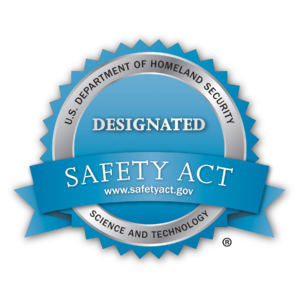 In 2017, Kimley-Horn designed a series of high-security pedestrian protection bollards along Las Vegas Boulevard in Clark County, NV. The project included more than 4,500 crash rated bollards, 3,700 linear feet of crash-rated post and cable protection, and 5,300 linear feet of concrete barrier rail, providing more than 8 total miles of pedestrian protection along the corridor. This past summer, the bollards ensured the errant vehicle pictured below resulted in no injuries, though it occurred within feet of a heavily-populated pedestrian area on the Las Vegas Strip.
In 2017, Kimley-Horn designed a series of high-security pedestrian protection bollards along Las Vegas Boulevard in Clark County, NV. The project included more than 4,500 crash rated bollards, 3,700 linear feet of crash-rated post and cable protection, and 5,300 linear feet of concrete barrier rail, providing more than 8 total miles of pedestrian protection along the corridor. This past summer, the bollards ensured the errant vehicle pictured below resulted in no injuries, though it occurred within feet of a heavily-populated pedestrian area on the Las Vegas Strip.
Vehicle-borne threats from both errant and intentional acts are on the rise. Unfortunately, the parking and mobility industry is not immune to these threats as parking and curb areas present numerous factors that make them danger zones—distracted drivers, pedestrians, and micromobility users; blind spots due to parked vehicles; and delivery and pickup zones.
Kimley-Horn’s Threat Mitigation Consulting Services (TMCS) is designed to protect lives and critical infrastructure against accidental or hostile vehicle impacts. TMCS has been awarded “Designated” status under the Federal SAFETY Act (www.safetyact.gov) as having documented ability to mitigate the impact of both accidental events and intentional attacks.
“Kimley-Horn is one of only a few engineering firms to have successfully completed the rigorous review process of the Department of Homeland Security,” explains Aaron Nathan, P.E., AICP (Dallas, TX). “It’s an unpleasant topic, but we can help you review your existing or planned projects/facilities and provide options that will improve safety related to vehicle threats.”
TMCS is a set of professional engineering services and proprietary software tools used to identify risks and protect individuals and infrastructure from errant vehicles and vehicle-borne terrorist threats. The TMCS suite of services includes assessing existing and proposed infrastructure; evaluating locations, facilities, attractions, and special events with the goal of protecting critical infrastructure and people from vehicle-borne attacks; identifying vulnerabilities; mitigating and prioritization planning; and designing infrastructure to mitigate potential threats, prevent injuries, and save lives.

